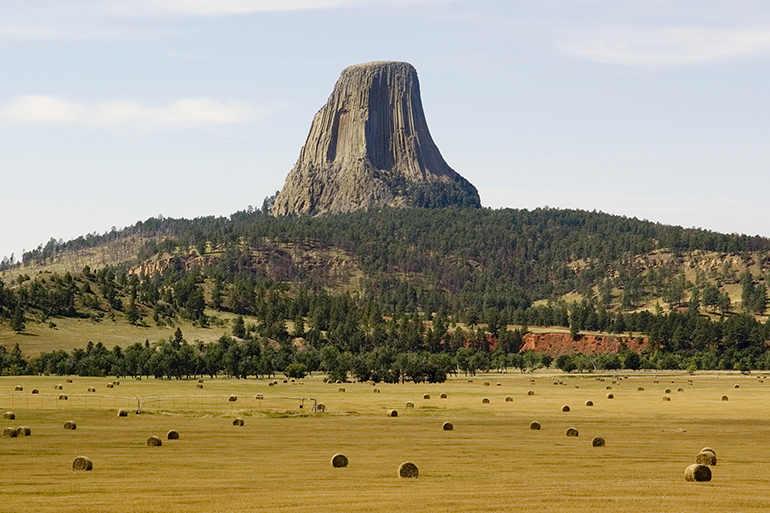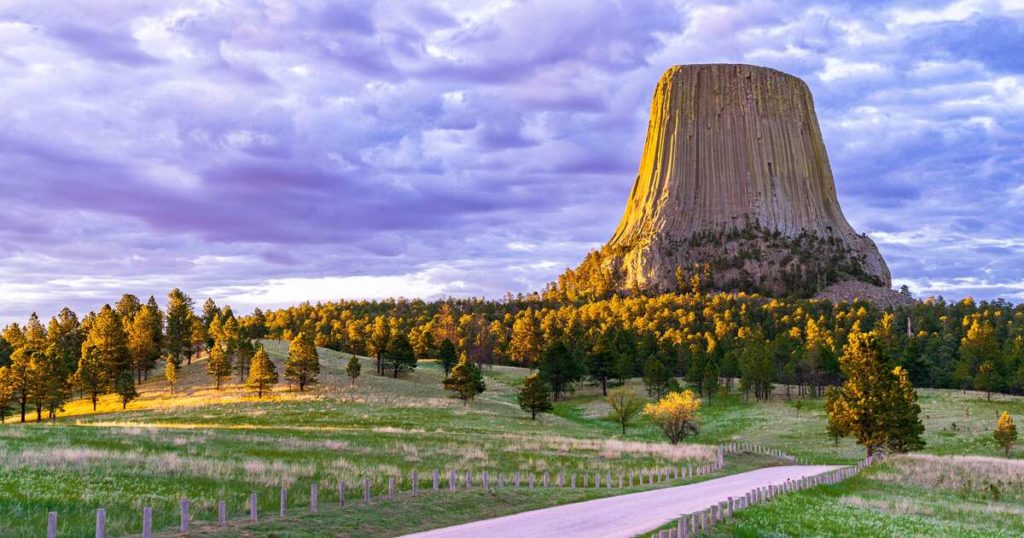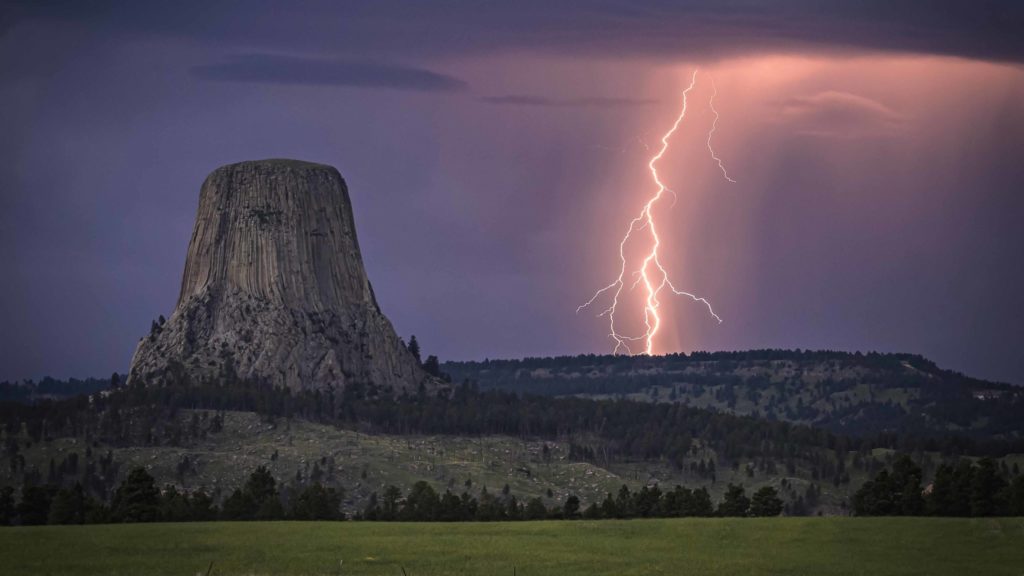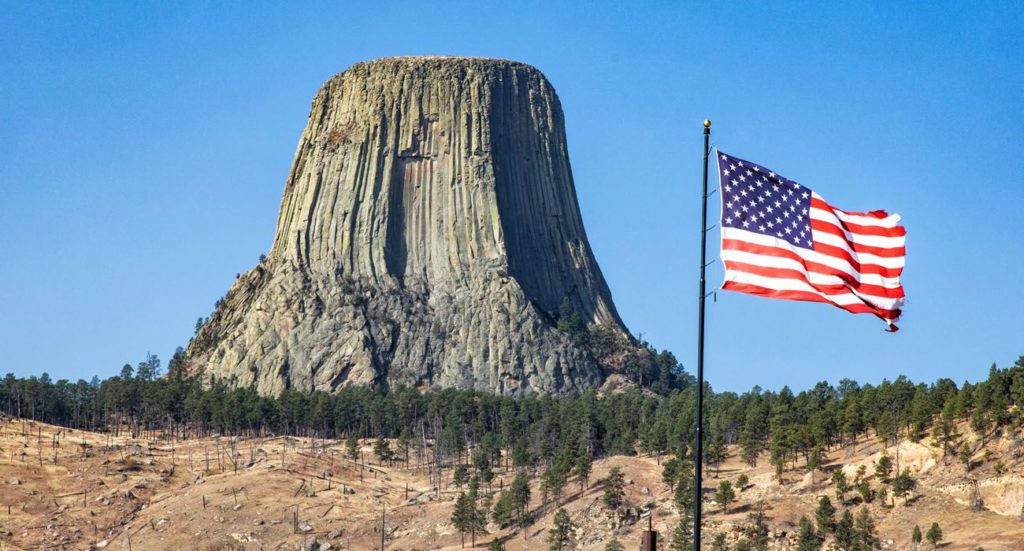Table of contents
Located among the breathtaking landscape of northeastern Wyoming, the Devil’s Tower stands as a majestic testament to the wonders of nature. This iconic geological formation has intrigued and captivated visitors for centuries. In this complete guide, we’ll take you on a journey to discover the enigmatic allure of the top of Devil’s Tower, from how it was formed to the best ways to experience its grandeur up close. Whether you’re a seasoned adventurer or a curious traveler, this guide will provide you with all the information you need to make the most of your visit, including essential details about its formation, the best time to visit, intriguing legends, and recommendations for an unforgettable stay. So, let’s embark on this extraordinary adventure and explore the top of the Devil’s Tower with awe-inspiring Devil’s Tower photos.
What is The Devil’s Tower?
Before we delve into the logistics of visiting this geological wonder, let’s begin by unraveling the mystery of the Devil’s Tower itself. Standing 867 feet tall and surrounded by lush forests, is a mesmerizing rock formation, known for its striking appearance and intriguing name.
How Was Devil’s Tower Formed?

One of the first questions that come to mind when gazing upon the Devil’s Tower is, “How was formed?” This remarkable structure was created millions of years ago through an incredible process. It is, in fact, a volcanic plug or an igneous intrusion that was once molten magma beneath the Earth’s surface. Over time, as the surrounding rock eroded away, this solidified magma rose to the surface, forming the impressive tower we see today. The unique hexagonal columns that define the tower were created as the rock cooled and cracked, giving its distinctive appearance.
The name “Devil’s Tower” itself has a fascinating history. It was bestowed upon the formation by Colonel Richard Dodge during an 1875 expedition. However, the name has no supernatural connotations; instead, it is believed to have been a mistranslation of a Native American name for the tower. In the native Lakota Sioux language, it is referred to as “Bear’s Lodge” or “Bear’s Tipi,” which carries a much more culturally significant meaning.
So, why should you visit? Besides its geological marvel, the Devil’s Tower offers a wealth of recreational opportunities, breathtaking views, and a chance to connect with nature on a profound level.
When Was It Formed?
Understanding how was Devils Tower formed is essential to appreciate its unique characteristics. As mentioned earlier, this natural wonder was shaped millions of years ago. Geologists estimate that the magma intrusion that formed the tower occurred around 50 million years ago during the Eocene epoch.
What makes the Devil’s Tower even more fascinating is its distinctive columnar structure. The columns are predominantly hexagonal in shape, a result of the cooling and contraction of the molten rock. This rare geological feature has made the Devil’s Tower a subject of scientific study and admiration for generations.
How to Get to The Devil’s Tower?
The Devil’s Tower is located in northeastern Wyoming, near the town of Hulett, South Dakota. Getting there is relatively straightforward, as it is accessible by car from several major cities and attractions in the region. Here’s how to reach the Devil’s Tower:
By Car:
- From Rapid City, South Dakota: Take US-16 W and US-14 W to WY-24 W in Crook County, Wyoming. Continue on WY-24 W to the Devil’s Tower.
- From Mount Rushmore: Head west on SD-244 W/US-16A W toward US-16 W. Merge onto US-16 W via the ramp to Rapid City, and then follow the same route as from Rapid City.
- From Cody, Wyoming: Drive south on WY-120 S toward WY-296 S, then continue on US-14 E to the Tower.
Keep in mind that the journey itself offers stunning views of the surrounding landscapes, so be sure to have your camera ready for some Devil’s Tower photos along the way.
What to Do When Arriving at The Devil’s Tower?

Upon arriving at the Devil’s Tower, you’ll find a range of activities to engage in, ensuring a memorable experience. Here are some of the top things to do and see when visiting the Devil’s Tower:
1. Tower Trail: Begin your exploration with the Tower Trail, a 1.3-mile paved path that encircles the base of the Devil’s Tower. This easy walk offers spectacular views of the tower and its surroundings. Don’t forget to snap some Devil’s Tower photos along the way.
2. Rock Climbing: For adventure enthusiasts, the top of the Devil’s Tower presents an exciting opportunity for rock climbing. Experienced climbers can tackle the tower’s challenging routes while surrounded by the stunning beauty of the Black Hills.
3. Wildlife Viewing: Keep an eye out for the diverse wildlife that inhabits the area. You may spot pronghorns, deer, and a variety of bird species, making it a perfect spot for wildlife photography.
4. Ranger Programs: The park offers ranger-led programs that provide insights into the geology, history, and Native American connections of the Devil’s Tower. These programs are both educational and entertaining.
5. Picnicking: There are designated picnic areas where you can relax, have a meal, and soak in the tranquil atmosphere of the tower.
6. Stargazing: If you visit during the evening, you’ll be treated to a mesmerizing display of stars due to the Devil’s Tower’s remote location. It’s an excellent spot for stargazing and astrophotography.
7. Hiking: For those seeking a more immersive experience, consider embarking on one of the park’s hiking trails, such as the Red Beds Trail or Joyner Ridge Trail, which offer varying levels of difficulty and unique perspectives of the tower.
When Is The Best Time to Visit?

The best time to visit the Devil’s Tower largely depends on your preferences and what you hope to experience during your trip. Here’s a breakdown of the different seasons and what they offer:
Spring (April to June): Spring is an excellent time for mild weather, blooming wildflowers, and fewer crowds. It’s an ideal season for hiking and enjoying the natural beauty surrounding the tower. Remember to take some Devil’s Tower photos of it.
Summer (June to August): Summer is the peak tourist season at the Devil’s Tower, with warm temperatures and longer daylight hours. This is the best time for rock climbing and ranger-led programs. Be prepared for more visitors and plan accommodations in advance.
Fall (September to October): Fall brings cooler temperatures and vibrant foliage. The autumn colors create a stunning backdrop for Devil’s Tower photos. Crowds begin to thin out, making it a pleasant time to visit.
Winter (November to March): Winter is a quiet time at the Devil’s Tower, and the park is open year-round. While it can be cold and snowy, the tower’s serene atmosphere and the opportunity for unique winter photography make it an appealing destination for adventurous travelers.
As for the park’s operating hours, the Devil’s Tower is generally open 24 hours a day, seven days a week, year-round. However, services and facilities like the visitor center may have seasonal variations, so it’s advisable to check ahead of your visit for any updates or closures.
Legends of Devil’s Tower
The Devil’s Tower is not only a geological wonder but also the subject of various Native American legends and stories. Different tribes, including the Lakota Sioux, Cheyenne, and Kiowa, have their own interpretations of how the tower came into existence. Here are some of the legends associated with it:
1. Bear’s Lodge: The Lakota Sioux refer to the Devil’s Tower as “Bear’s Lodge” or “Bear’s Tipi.” According to their legend, the formation was created when a group of girls was pursued by bears. The girls sought refuge on a rock, and as they prayed for help, the rock began to rise, lifting them away from the bears’ reach. The bears attempted to climb the rock, leaving deep claw marks, which can still be seen on the tower’s columns.
2. The Cheyenne Legend: The Cheyenne people have their own tale of the Devil’s Tower. According to their legend, seven young girls were playing in the area when they were chased by a giant bear. To escape, they climbed onto a rock, and as they prayed for safety, the rock began to grow and lifted them higher and higher, out of reach of the bear. The Cheyenne refer to the tower as “Bear’s House.”
3. The Kiowa Legend: The Kiowa people have a similar legend, with the key difference being that their story involves seven sisters who were being pursued by a bear. The sisters prayed for help, and the rock they were on began to rise, forming the Devil’s Tower.
These legends not only add to the cultural significance of it but also serve as a reminder of the deep connection between indigenous peoples and the natural world. When you visit, take a moment to appreciate the rich history and stories that have been woven into the fabric of this remarkable place.
Looking for a Place to Stay Near The Devil’s Tower?
Discover the ultimate South Dakota adventure at Black Hawk Creek RV Park & Cabins! Located in the heart of this beautiful state, our year-round park offers the perfect base camp for exploring all the iconic tourist attractions nearby, including the Devil’s Tower. Experience the beauty and excitement of South Dakota, and make unforgettable memories at Black Hawk Creek RV Park & Cabins.

